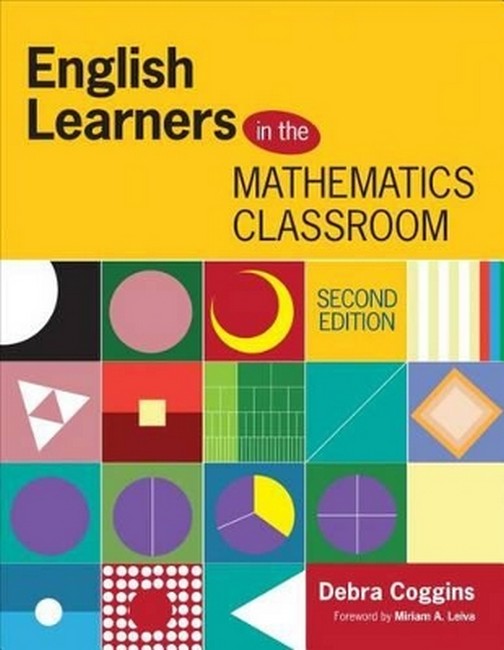Debra Coggins is a mathematics education consultant with experience advising districts, coaching teachers, and developing and delivering professional development. As a writer, she has helped develop a number of professional development programs for teachers of mathematics. These include creating CORE Math: Building Strong Foundations, assisting with the development of the Math Case Methods Project and Math Pathways and Pitfalls at WestEd, and coordinating the writing of America's Choice Core Assignments. She was the lead writer of A Mathematics Source Book for Elementary and Middle School Teachers: Key Concepts, Teaching Tips, and Learning Pitfalls, a resource book for teachers and professional developers. Debra has presented at local, state, and national conferences, with a particular interest in strategies for supporting English learners, and the use of diagrams when teaching concepts related to operations and proportional reasoning. Debra currently assists the West Contra Costa Unified School District with mathematics intervention programs and Oakland Unified School District small schools with teaching strategies for reaching English learners in mathematics classes. Debra has 17 years teaching experience in grades K-12.
Request Academic Copy
Please copy the ISBN for submitting review copy form
Description
Preface Foreword by Miriam A. Leiva Introduction 1. Developing Conversational Language: Help English Learners Talk-to-Learn During Mathematics Lessons Rationale From Research Mathematics Teaching Example: Sorting Shapes (Geometric Attributes) Discussion of the Mathematics Teaching Example Teaching Tips Discussion of Conversational Language Conversational Language Research 2. Developing Academic Language: Develop Mathematics Concepts and Vocabulary for English Learners Rationale From Research Mathematics Teaching Example: Number Riddles (Addition and Subtraction Word Problems) Discussion of the Mathematics Teaching Example Teaching Tips Discussion of Academic Language Development Academic Language Research Discussion and Project Questions 3. Scaffolding: Give Support for Both Mathematics and Language Learning Rationale From Research Mathematics Teaching Example: Table Arrangement Problem Discussion of the Mathematics Teaching Example Teaching Tips Discussion of Scaffolding in Mathematics Scaffolding Research Discussion and Project Questions 4. The Role of Concrete Materials: Utilize Objects to Develop Mathematical Understanding for English Learners Rationale From Research Mathematics Teaching Example: District Benchmark (Multiply By a Fraction) Discussion of Mathematics Teaching Example Teaching Tips Discussion of Concrete Materials in Mathematics Concrete Materials Research Discussion and Project Questions 5. Visual Learning: Provide Mathematical and Organizational Representations As a Regular Component of Instruction Rationale From Research Mathematics Teaching Example: How Many Chairs? (Two-Digit Multiplication) Discussion of Mathematics Teaching Example Teaching Tips Visual Learning Research Discussion and Project Questions 6. Questioning Strategies: Ask Questions to Foster Students' Learning of Mathematics and English Rationale From Research Mathematics Teaching Example: Snail Races (Probability) Discussion of Mathematics Teaching Example Teaching Tips Discussion of Questioning Strategies in Mathematics Questioning in Mathematics Research Discussion and Project Questions 7. Comprehensible Input: Combine Many Strategies to Develop Mathematics Concepts Through Clear and Effective Instruction Rationale From Research Mathematics Teaching Example: Similar Shapes, Multiplicative Scaling, and Proportion Discussion of Mathematics Teaching Example Teaching Tips Discussion of Comprehensible Input in Mathematics Comprehensible Input Research Discussion and Project Questions Appendix A 1.1 Geometric Shapes A 3.1 Blank Planning Map A 3.2 Sample Planning Map A 6.1 Gameboard for Snail Races A 6.2 Questions List References
"This book provides an updated and integrated look at math instruction with specific lessons and examples so that teachers can use it in their professional development settings." -- Maria Dufek, Educational Consultant "This book addresses common issues and challenges classroom teachers face as they deal with diverse groups of students, including English Language Learners. The ideas and strategies, supported by research and field experiences, will benefit ALL students because they are addressing learning challenges that are common for many learners." -- Trudy Mitchell, Middle School Math Consultant "This is by far the best book on designing mathematics instruction for English Language Learners. I particularly like how the teaching tips do not dumb down or oversimplify instructional strategies for teachers. The short but thorough research reviewed in each chapter gives background for why the teaching tips are so important in developing mathematically literate students." -- Dan Battey, Associate Professor

